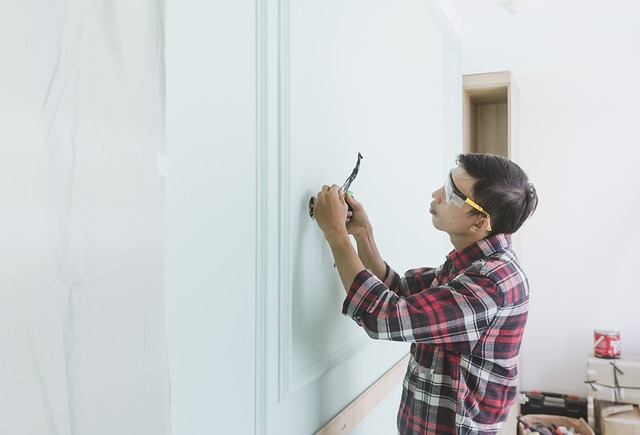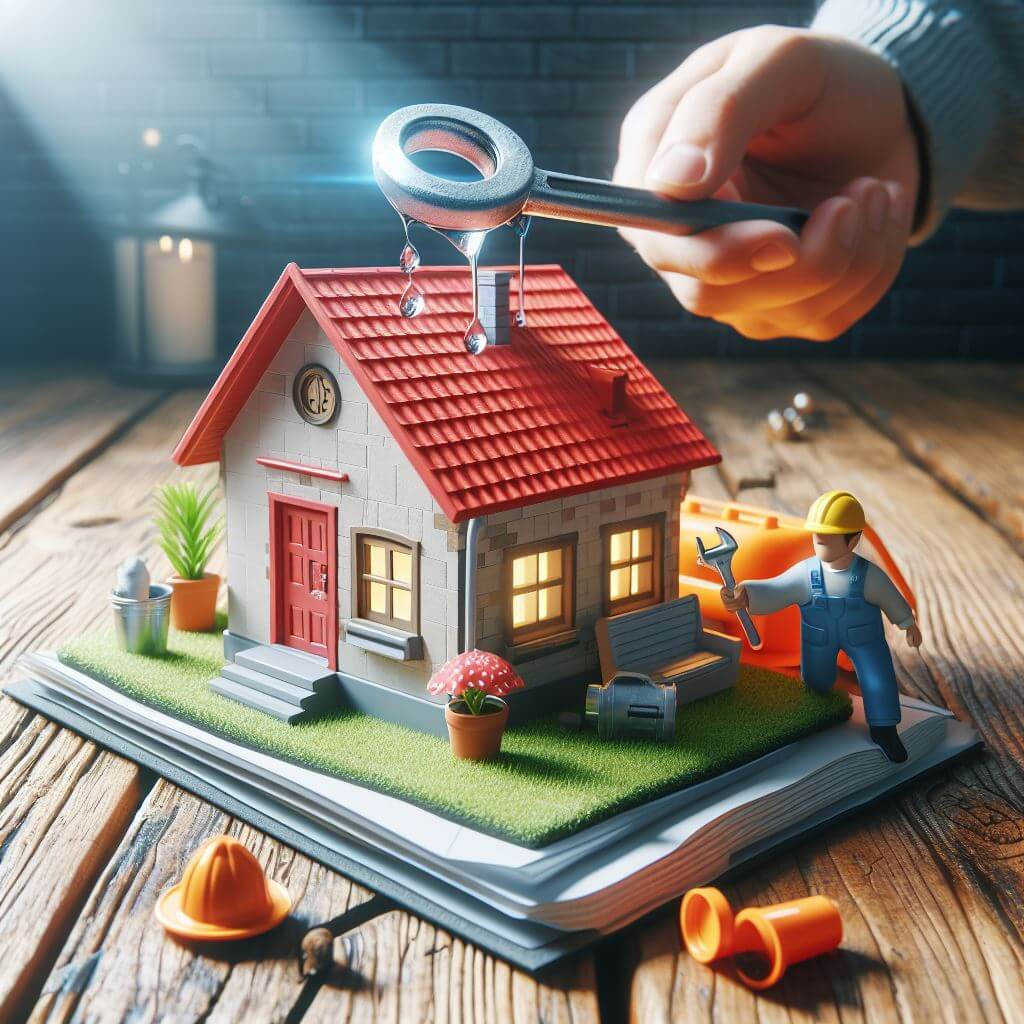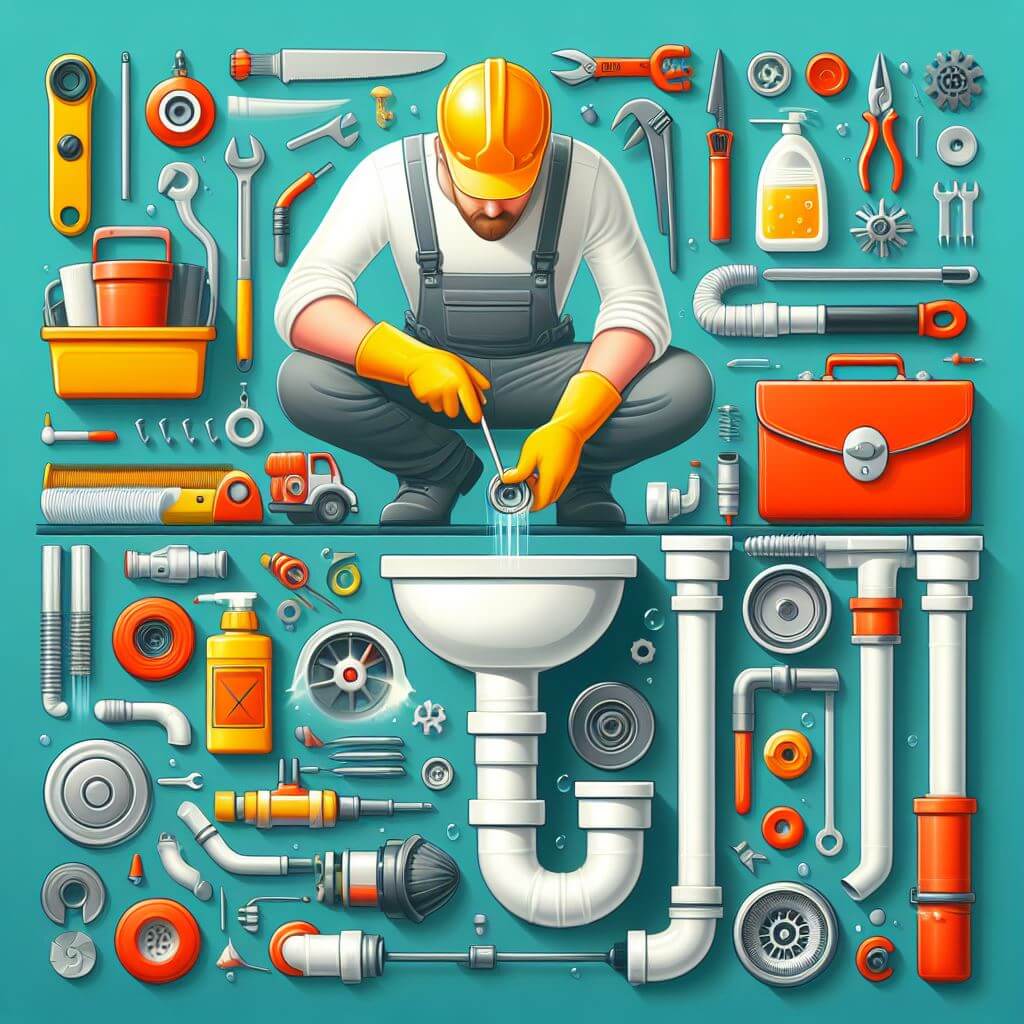Cost-Effective Home Maintenance: DIY Repair Solutions for Homeowners
Maintaining a home can be financially daunting, but there are practical DIY home repair techniques that homeowners can employ to mitigate expenses. In this guide, we’ll explore a range of cost-effective home maintenance strategies, offering home maintenance tips to avoid the burden of expensive repairs. With these DIY repair solutions, even beginners can navigate their way through home repair hacks, following a preventive home maintenance approach to save on costs.
Understanding the Need for DIY Home Repair Techniques
Recognizing the Importance of Preventive Maintenance
Implementing cost-saving home improvement methods through preventive maintenance is akin to investing in a home’s future. Proactively tending to minor issues serves as a protective shield against potentially skyrocketing repair costs. Regular inspections are akin to health check-ups for your home, detecting issues before they escalate. Simple tasks, like fixing leaky faucets or sealing cracks, aren’t just minor chores; they’re strategic maneuvers to prevent substantial expenses. Embracing these practices isn’t just about immediate fixes but fostering a culture of attentiveness that extends the lifespan of your dwelling.
Transitioning into a preventive mindset not only safeguards against unforeseen financial burdens but also fosters a harmonious living environment. Small, unchecked problems, such as a seemingly innocent water leak, can lead to larger structural issues, resulting in avoiding costly repairs as a homeowner. Moreover, the consistent upkeep of your residence ensures a more pleasant living space.
For instance, timely inspection and cleaning of gutters not only prevent water damage but also preserve the aesthetic appeal of your property. By intertwining these preventive strategies into your routine, you’re not just saving money; you’re enhancing the overall quality of your home.
Essential Tools for Cost-Effective Household Repairs
Equipping yourself with the right arsenal of tools is akin to having a superhero’s utility belt for your home. These tools aren’t just about fixing; they’re about empowerment and efficiency. Consider investing in versatile tools like adjustable wrenches or multipurpose screwdrivers; they serve multiple purposes and save space. Power drills, with various bits and attachments, become your Swiss Army knife for home repairs, capable of handling diverse tasks from hanging shelves to drilling pilot holes. Moreover, understanding how to use these tools safely and effectively is as crucial as owning them; it ensures not just savings but also safety.
Transitioning from relying solely on professional help to occasionally tackling issues yourself reshapes your relationship with your home. Having these tools readily available not only empowers you to take charge of minor fixes but also allows for immediate action when problems arise. Picture this: a leaking faucet during odd hours; armed with the right tools and knowledge, you can swiftly address the issue without waiting for a professional.
This not only saves time but also prevents potential water damage, contributing to preventing costly repairs as a homeowner. Moreover, the confidence gained from successfully handling small repairs fosters a sense of accomplishment and self-sufficiency.
Practical DIY Home Maintenance Tips
Simple Home Repairs to Avoid Expenses
Addressing minor issues in your home is akin to nipping potential problems in the bud. Take a leaky faucet, for instance; while a steady drip may seem inconsequential, it can contribute to wasted water and inflated utility bills over time. Simple repairs here involve replacing worn-out washers or seals, tasks easily manageable with minimal tools and expertise. Similarly, clogged drains are another headache waiting to escalate. Using natural remedies like baking soda and vinegar or employing a drain snake promptly clears these issues before they turn into costly plumbing disasters.
Transitioning from a reactionary stance to a proactive one is pivotal. Incorporating a routine of periodic checks can help detect issues early. For instance, examining caulking around sinks and bathtubs ensures that water doesn’t seep into walls, causing structural damage. Tightening loose fixtures not only prevents accidents but also maintains the integrity of your home. These seemingly mundane tasks play a significant role in avoiding expensive repairs at home and preserving your property’s value over time.
Remember, the key isn’t just about fixing issues but also understanding the underlying causes. Identifying the root of a problem allows for more effective solutions. For example, a constantly running toilet might seem like a minor annoyance, but it could indicate a faulty flapper valve or a more substantial issue with the plumbing system. By delving deeper into the problem, homeowners can implement more comprehensive fixes, thereby avoiding costly repairs as a homeowner. Regular maintenance isn’t just about saving money; it’s about fostering a secure and comfortable living environment.
Low-Cost Home Upgrades and Renovations
Revamping your home doesn’t have to entail draining your savings; it’s about strategic choices that yield maximum impact. For instance, repainting walls can instantly breathe new life into a space, creating an entirely refreshed ambiance. Consider choosing lighter shades to make rooms appear more spacious or experimenting with accent walls to add character without extensive costs. Resealing surfaces, especially in high-moisture areas like bathrooms or kitchens, not only prevents water damage but also elevates the overall look and longevity of the space.
Transitioning from traditional lighting fixtures to energy-efficient LED options is a savvy move. These bulbs not only consume less energy, contributing to cost-effective household repairs, but also have a longer lifespan, reducing replacement frequency and costs. Moreover, exploring smart lighting options enables you to control ambiance and energy usage, providing both convenience and savings.
When it comes to home renovation on a budget, it’s not just about visual enhancements but also functional improvements. Upgrading fixtures such as faucets and doorknobs can significantly impact the overall aesthetic appeal while also enhancing functionality. For instance, opting for water-saving faucets not only adds elegance to your space but also contributes to low-cost home upgrades that save on utility bills in the long run. These subtle changes can make a substantial difference without straining your budget.
Advanced Strategies for Cost-Effective Home Maintenance
DIY Repair Solutions for Common Problems
Navigating through home repairs doesn’t always demand calling in the cavalry. Often, issues that seem overwhelming have manageable solutions within your grasp. Take a leaky roof, for instance; it might appear like a colossal problem, but fixing damaged shingles or applying sealant can be manageable tasks with the right tools and guidance. Similarly, repairing drywall doesn’t always necessitate hiring a professional; minor holes or cracks can be easily patched up with joint compound and a bit of sanding.
Transitioning from feeling overwhelmed by home issues to confidently tackling them is about acquiring knowledge and skills. Understanding the basics of electrical systems, for instance, can enable homeowners to troubleshoot and fix minor electrical problems, like replacing a faulty outlet or fixing a light switch. This not only saves on expensive repairs at home but also ensures a safer living environment. Moreover, knowing these DIY solutions doesn’t just save money; it fosters a sense of pride and accomplishment in maintaining one’s home.
Money-Saving Home Repair Strategies
Going beyond quick fixes involves a strategic mindset that could potentially save a substantial amount of money in the long run. When faced with a multitude of repairs, prioritizing based on urgency is key. Focus on addressing issues that pose immediate threats to your home’s safety or those that could lead to more significant problems if ignored. This approach helps in avoiding costly repairs as a homeowner by nipping issues in the bud before they escalate.
Transitioning from accepting the first quote to seeking multiple estimates for major repairs is a game-changer. Don’t hesitate to compare prices and negotiate with contractors or service providers. Many professionals are open to negotiations or may offer discounts if asked, contributing to cost-saving home improvement methods. Additionally, exploring alternative solutions or materials that provide the same quality at a lower cost can significantly impact your overall expenses.
Moreover, preventive measures like investing in regular maintenance of appliances and systems at home are akin to an insurance policy against exorbitant repair bills. Routine servicing of HVAC systems, plumbing, or electrical systems not only ensures smooth operations but also helps in detecting potential issues early, mitigating the need for extensive and expensive repairs. This proactivity aligns perfectly with preventing costly repairs as a homeowner and maintaining a budget-friendly approach to home upkeep.
Leveraging DIY Home Improvement Projects
Smart and Simple Renovations
Embarking on DIY home improvement projects doesn’t have to mean extravagant overhauls; it’s about making calculated and impactful changes. Consider revamping your space with small yet effective upgrades. Upgrading kitchen cabinets, for instance, can breathe new life into your cooking area without breaking the bank. Refurbishing or repainting cabinets, accompanied by replacing handles or adding organizational features, can remarkably transform the space at a fraction of the cost of a full remodel.
Transitioning to functional upgrades not only enhances aesthetics but also boosts efficiency. Retiling bathrooms, for instance, isn’t just about a visual revamp; it also ensures durability and cleanliness. Opting for water-resistant and easy-to-maintain tiles not only adds a fresh look but also contributes to home renovation on a budget by reducing long-term maintenance costs.
Furthermore, investing in energy-efficient appliances aligns perfectly with low-cost home upgrades that offer substantial benefits. Appliances with high energy ratings not only reduce utility bills but also contribute to a greener environment. Consider swapping out old appliances for newer, eco-friendly models that offer enhanced features and cost savings in the long run. These small yet calculated renovations can redefine spaces without straining your finances.
Embracing Preventive Maintenance
Prioritizing preventive maintenance is akin to safeguarding your home’s well-being. Regular inspection and cleaning of gutters are pivotal in preventing water damage. Clogged gutters can lead to water overflow, which, if left unattended, could result in structural issues and costly repairs. Similarly, checking insulation isn’t just about maintaining temperature; it also ensures energy efficiency, contributing to preventive maintenance for homeowners by reducing utility bills.
Transitioning to proactive HVAC system maintenance not only ensures a comfortable indoor environment but also extends the system’s lifespan. Regularly changing air filters, cleaning vents, and scheduling professional inspections and maintenance prevent breakdowns and costly repairs. This proactive approach aligns with preventive maintenance that’s focused on saving money in the long run.
Moreover, considering the external factors impacting your home’s integrity is crucial. Weatherproofing your home against extreme weather conditions, such as sealing cracks and gaps, not only prevents water intrusion but also contributes to DIY home repair techniques that mitigate potential damage. These small yet impactful measures are instrumental in preserving your home’s structural integrity and averting unexpected expenses.
Budget-Friendly Home Fixes for Beginners
Essential Repairs Anyone Can Tackle
Embarking on home repair projects doesn’t have to feel daunting, especially for newcomers to the DIY scene. Starting with seemingly small tasks can serve as stepping stones to greater confidence and capability. For instance, addressing squeaky doors isn’t just about silencing the annoyance; it’s an opportunity to learn basic maintenance by applying lubricant to hinges or adjusting screws.
Transitioning from hesitation to action, simple tasks like replacing damaged tiles can be surprisingly manageable. Learning to remove and replace a damaged tile not only enhances the aesthetics of your space but also develops practical skills. Similarly, patching up minor wall cracks isn’t just about visual appeal; it’s about preventing further damage and DIY repair solutions that preserve your home’s structural integrity.
Delving into these DIY endeavors isn’t just about the immediate fix; it’s about building a foundation of skills. Over time, mastering these basic repairs can lead to tackling more complex tasks with confidence, ultimately saving both time and money while fostering a sense of accomplishment. These beginner-friendly repairs not only elevate your home’s condition but also empower you to take charge of its maintenance.
Learning from DIY Maintenance Guides
Tapping into DIY maintenance guides can be a game-changer for homeowners looking to bolster their repair skills. These resources serve as treasure troves of knowledge, offering a plethora of step-by-step instructions tailored for various home repair needs. Online platforms host an array of video tutorials covering everything from fixing leaky faucets to more complex electrical repairs.
Transitioning from uncertainty to confidence, these guides cater to diverse learning styles. Books provide in-depth explanations and illustrations, while video guides offer visual walkthroughs, ideal for those who learn best through demonstrations. Additionally, forums and online communities serve as platforms for sharing experiences and seeking advice, fostering a sense of camaraderie among DIY enthusiasts.

The Impact of Low-Cost Home Upgrades
Value-Adding Improvements
Diving into DIY maintenance guides offers more than just surface-level knowledge; it’s a gateway to understanding your home’s intricate systems. Beyond fixing immediate issues, these guides empower homeowners to decipher underlying problems, fostering a proactive approach to maintenance. Troubleshooting common issues becomes a skill, aiding in swift resolutions and cost savings.
Transitioning from uncertainty to proficiency, these resources equip individuals to make informed decisions regarding their home’s upkeep. Understanding the inner workings of plumbing, electrical systems, or structural components not only saves money on professional services but also grants a sense of control and security. It’s about transforming from reliant homeowners to confident problem-solvers, bolstered by knowledge acquired from these invaluable DIY maintenance guides.
These guides offer a wealth of tips and insights, often covering a wide spectrum of home-related topics. From seasonal maintenance checklists to in-depth tutorials on repairs, they serve as comprehensive companions throughout a homeowner’s journey. They foster a culture of continuous learning, enabling individuals to adapt and tackle diverse repair challenges that may arise over time. These resources are not just about immediate fixes; they’re lifelong companions in homeownership, enhancing skills and knowledge for sustainable maintenance practices.
Energy-Efficient Solutions
Exploring energy-efficient upgrades presents a dual benefit for homeowners: reduced utility expenses and a greener footprint. LED lighting, for instance, consumes significantly less energy than traditional bulbs and has a longer lifespan, translating to substantial savings in the long run. Transitioning to LED lighting isn’t just a financial decision; it’s a step towards sustainable living, minimizing energy wastage.
Moreover, enhancing insulation is a strategic move for energy conservation. Properly insulated homes retain heat in winters and cool air in summers, reducing reliance on heating and cooling systems. This aligns with cost-effective household repairs that directly impact energy consumption, offering a comfortable living space while curbing energy bills. Upgrading insulation materials or sealing air leaks are effective ways to enhance a home’s energy efficiency.
Furthermore, integrating smart thermostats into homes presents a tech-savvy solution for efficient temperature control. These devices learn usage patterns, adjusting heating or cooling based on occupancy, thus optimizing energy usage. Smart thermostats not only offer convenience but also contribute to energy-efficient solutions by minimizing unnecessary energy consumption. They’re an innovative addition that merges comfort and sustainability seamlessly.
Mastering DIY Home Repair Techniques
Tools and Techniques for Success
Mastering the use of fundamental home repair tools forms the backbone of successful DIY endeavors. Beyond the basics of hammers, screwdrivers, pliers, and measuring tapes, expanding your toolkit to include more specialized items like a stud finder or a pipe wrench widens your repair capabilities. Transitioning from a limited set of tools to a more diverse collection enables you to tackle a broader range of repair projects efficiently.
Moreover, understanding proper techniques for using these tools is as crucial as owning them. For instance, knowing the right way to wield a hammer or the correct screwdriver for different types of screws enhances precision and efficiency in repairs. This knowledge not only saves time but also prevents potential damage to fixtures or surfaces, aligning perfectly with DIY home repair techniques that prioritize accuracy and safety.
As you advance in your DIY journey, consider investing in power tools. Tools like drills, saws, or sanders significantly speed up tasks and expand your capabilities, allowing for more intricate and efficient repairs. They’re a valuable addition that takes your DIY prowess to the next level, enabling you to handle more complex projects with confidence.
Addressing Common Problems
Acquiring the skills to troubleshoot common household problems is a valuable asset for homeowners. Understanding the intricacies of a running toilet, for instance, allows for quick identification of faulty components like a flapper or a fill valve. Transitioning from uncertainty to diagnosis, learning to dismantle a jammed garbage disposal not only resolves immediate issues but also prevents further damage, aligning with DIY repair solutions that prioritize timely intervention.
Addressing electrical problems like a malfunctioning circuit breaker demands caution and knowledge. Understanding the root cause, whether it’s an overloaded circuit or a faulty breaker, empowers homeowners to take appropriate action. Transitioning from ignorance to awareness, these insights not only facilitate quick fixes but also enhance safety measures, vital in avoiding accidents or damage to appliances.
Delving into these DIY repair solutions isn’t just about immediate resolutions; it’s about cultivating a sense of self-reliance. These skills not only save money on professional services but also offer a sense of accomplishment and independence. They’re skills that continue to benefit homeowners beyond the immediate fix, fostering a more confident and capable approach to home maintenance.
Advanced Strategies for Avoiding Costly Repairs
Strategizing Long-Term Solutions
Opting for money-saving home repair strategies requires a forward-thinking approach. Beyond immediate fixes, scheduling regular servicing for major appliances like HVAC systems or water heaters is pivotal. Transitioning from reactionary to proactive, these routine check-ups not only ensure optimal performance but also detect potential issues before they escalate, aligning perfectly with preventive maintenance for homeowners that prevents costly breakdowns.
Conducting periodic structural inspections is a strategic move in averting significant expenses. Engaging professionals to assess a home’s foundation, roof, or plumbing system identifies weaknesses early on. Transitioning from oversight to vigilance, these inspections offer insights into areas requiring attention, enabling homeowners to address potential issues promptly, thus minimizing the need for extensive and costly repairs.
Embracing a culture of proactive maintenance isn’t just about cost-saving; it’s about preserving the value of your investment. Implementing these strategies not only reduces the risk of sudden financial burdens but also ensures the longevity and sustainability of your home. It’s a strategic approach that prioritizes financial prudence while safeguarding the integrity of your property for the long term.
Seeking Professional Advice
Knowing when to seek professional advice is crucial. Consulting with experts for complex issues ensures problems are addressed efficiently, potentially saving money by avoiding further damage.
Adopting a proactive stance towards DIY home repair techniques and cost-effective home maintenance empowers homeowners. By integrating these strategies, from embracing preventive maintenance to mastering DIY repair solutions, individuals can safeguard their homes while curbing unnecessary expenses.
Remember, the key to effective home maintenance isn’t just about the immediate fixes but also about cultivating a mindset of regular upkeep and staying informed about budget-friendly home fixes.





